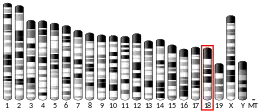| SH3TC2 | |||||||||||||||||||||||||||||||||||||||||||||||||||
|---|---|---|---|---|---|---|---|---|---|---|---|---|---|---|---|---|---|---|---|---|---|---|---|---|---|---|---|---|---|---|---|---|---|---|---|---|---|---|---|---|---|---|---|---|---|---|---|---|---|---|---|
| Identifiers | |||||||||||||||||||||||||||||||||||||||||||||||||||
| Aliases | SH3TC2, CMT4C, MNMN, SH3 domain and tetratricopeptide repeats 2 | ||||||||||||||||||||||||||||||||||||||||||||||||||
| External IDs | OMIM: 608206 MGI: 2444417 HomoloGene: 11596 GeneCards: SH3TC2 | ||||||||||||||||||||||||||||||||||||||||||||||||||
| |||||||||||||||||||||||||||||||||||||||||||||||||||
| |||||||||||||||||||||||||||||||||||||||||||||||||||
| |||||||||||||||||||||||||||||||||||||||||||||||||||
| |||||||||||||||||||||||||||||||||||||||||||||||||||
| Wikidata | |||||||||||||||||||||||||||||||||||||||||||||||||||
| |||||||||||||||||||||||||||||||||||||||||||||||||||
SH3 domain and tetratricopeptide repeats-containing protein 2 is a protein that in humans is encoded by the SH3TC2 gene.[5][6] It is believed to be expressed in the Schwann cells that wrap the myelin sheath around nerves.
Function
This gene encodes a protein with two N-terminal Src homology 3 (SH3) domains and 10 tetratricopeptide repeat (TPR) motifs, and is a member of a small gene family. The gene product has been proposed to be an adapter or docking molecule.[6]
The mouse version (orthologue) of SH3TC2 is believed to be expressed in Schwann cells. The tagged protein localizes to the plasma membrane and to the perinuclear endocytic recycling compartment. Mice lacking Sh3tc2 have an abnormal organization of the node of Ranvier consistent with the idea that the protein might have a role in myelination or in axon – glial cell interactions.[7][8]
Clinical significance
Mutations in this gene result in autosomal recessive Charcot-Marie-Tooth disease type 4C, a childhood-onset neurodegenerative disease characterized by demyelination of motor and sensory neurons.[6]Variants affecting this gene also cause Mononeuropathy of the median nerve (MNMN) at the wrist.[9]
References
- 1 2 3 GRCh38: Ensembl release 89: ENSG00000169247 - Ensembl, May 2017
- 1 2 3 GRCm38: Ensembl release 89: ENSMUSG00000045629 - Ensembl, May 2017
- ↑ "Human PubMed Reference:". National Center for Biotechnology Information, U.S. National Library of Medicine.
- ↑ "Mouse PubMed Reference:". National Center for Biotechnology Information, U.S. National Library of Medicine.
- ↑ Senderek J, Bergmann C, Stendel C, Kirfel J, Verpoorten N, De Jonghe P, Timmerman V, Chrast R, Verheijen MH, Lemke G, Battaloglu E, Parman Y, Erdem S, Tan E, Topaloglu H, Hahn A, Muller-Felber W, Rizzuto N, Fabrizi GM, Stuhrmann M, Rudnik-Schoneborn S, Zuchner S, Michael Schroder J, Buchheim E, Straub V, Klepper J, Huehne K, Rautenstrauss B, Buttner R, Nelis E, Zerres K (Oct 2003). "Mutations in a gene encoding a novel SH3/TPR domain protein cause autosomal recessive Charcot-Marie-Tooth type 4C neuropathy". Am J Hum Genet. 73 (5): 1106–19. doi:10.1086/379525. PMC 1180490. PMID 14574644.
- 1 2 3 "Entrez Gene: SH3TC2 SH3 domain and tetratricopeptide repeats 2".
- ↑ Lupski JR, Reid JG, Gonzaga-Jauregui C, Rio Deiros D, Chen DC, Nazareth L, Bainbridge M, Dinh H, Jing C, Wheeler DA, McGuire AL, Zhang F, Stankiewicz P, Halperin JJ, Yang C, Gehman C, Guo D, Irikat RK, Tom W, Fantin NJ, Muzny DM, Gibbs RA (April 2010). "Whole-genome sequencing in a patient with Charcot-Marie-Tooth neuropathy". N. Engl. J. Med. 362 (13): 1181–91. doi:10.1056/NEJMoa0908094. PMC 4036802. PMID 20220177.
- ↑ Arnaud E, Zenker J, de Preux Charles AS, Stendel C, Roos A, Médard JJ, Tricaud N, Weis J, Suter U, Senderek J, Chrast R (October 2009). "SH3TC2/KIAA1985 protein is required for proper myelination and the integrity of the node of Ranvier in the peripheral nervous system". Proc. Natl. Acad. Sci. U.S.A. 106 (41): 17528–33. Bibcode:2009PNAS..10617528A. doi:10.1073/pnas.0905523106. PMC 2765159. PMID 19805030.
- ↑ "UniProt". www.uniprot.org. Retrieved 2023-11-23.
Further reading
- LeGuern E, Guilbot A, Kessali M, et al. (1997). "Homozygosity mapping of an autosomal recessive form of demyelinating Charcot-Marie-Tooth disease to chromosome 5q23-q33". Hum. Mol. Genet. 5 (10): 1685–8. doi:10.1093/hmg/5.10.1685. PMID 8894708.
- Hiroi T, Hayashi-Kobayashi N, Nagumo S, et al. (2002). "Identification and characterization of the human serotonin-4 receptor gene promoter". Biochem. Biophys. Res. Commun. 289 (2): 337–44. doi:10.1006/bbrc.2001.5979. PMID 11716477.
- Kikuno R, Nagase T, Waki M, Ohara O (2002). "HUGE: a database for human large proteins identified in the Kazusa cDNA sequencing project". Nucleic Acids Res. 30 (1): 166–8. doi:10.1093/nar/30.1.166. PMC 99081. PMID 11752282.
- Nagase T, Kikuno R, Ohara O (2002). "Prediction of the coding sequences of unidentified human genes. XXII. The complete sequences of 50 new cDNA clones which code for large proteins". DNA Res. 8 (6): 319–27. doi:10.1093/dnares/8.6.319. PMID 11853319.
- Strausberg RL, Feingold EA, Grouse LH, et al. (2003). "Generation and initial analysis of more than 15,000 full-length human and mouse cDNA sequences". Proc. Natl. Acad. Sci. U.S.A. 99 (26): 16899–903. Bibcode:2002PNAS...9916899M. doi:10.1073/pnas.242603899. PMC 139241. PMID 12477932.
- Ota T, Suzuki Y, Nishikawa T, et al. (2004). "Complete sequencing and characterization of 21,243 full-length human cDNAs". Nat. Genet. 36 (1): 40–5. doi:10.1038/ng1285. PMID 14702039.
- Gerhard DS, Wagner L, Feingold EA, et al. (2004). "The status, quality, and expansion of the NIH full-length cDNA project: the Mammalian Gene Collection (MGC)". Genome Res. 14 (10B): 2121–7. doi:10.1101/gr.2596504. PMC 528928. PMID 15489334.
- Wan D, Gong Y, Qin W, et al. (2004). "Large-scale cDNA transfection screening for genes related to cancer development and progression". Proc. Natl. Acad. Sci. U.S.A. 101 (44): 15724–9. Bibcode:2004PNAS..10115724W. doi:10.1073/pnas.0404089101. PMC 524842. PMID 15498874.
- Gooding R, Colomer J, King R, et al. (2006). "A novel Gypsy founder mutation, p.Arg1109X in the CMT4C gene, causes variable peripheral neuropathy phenotypes". J. Med. Genet. 42 (12): e69. doi:10.1136/jmg.2005.034132. PMC 1735969. PMID 16326826.
- Kimura K, Wakamatsu A, Suzuki Y, et al. (2006). "Diversification of transcriptional modulation: large-scale identification and characterization of putative alternative promoters of human genes". Genome Res. 16 (1): 55–65. doi:10.1101/gr.4039406. PMC 1356129. PMID 16344560.
- Claramunt R, Sevilla T, Lupo V, et al. (2007). "The p.R1109X mutation in SH3TC2 gene is predominant in Spanish Gypsies with Charcot-Marie-Tooth disease type 4". Clin. Genet. 71 (4): 343–9. doi:10.1111/j.1399-0004.2007.00774.x. PMID 17470135. S2CID 20683529.
External links
- GeneReviews/NCBI/NIH/UW entry on Charcot-Marie-Tooth Neuropathy Type 4
- GeneReviews/NCBI/NIH/UW entry on Charcot-Marie-Tooth Neuropathy Type 4C





